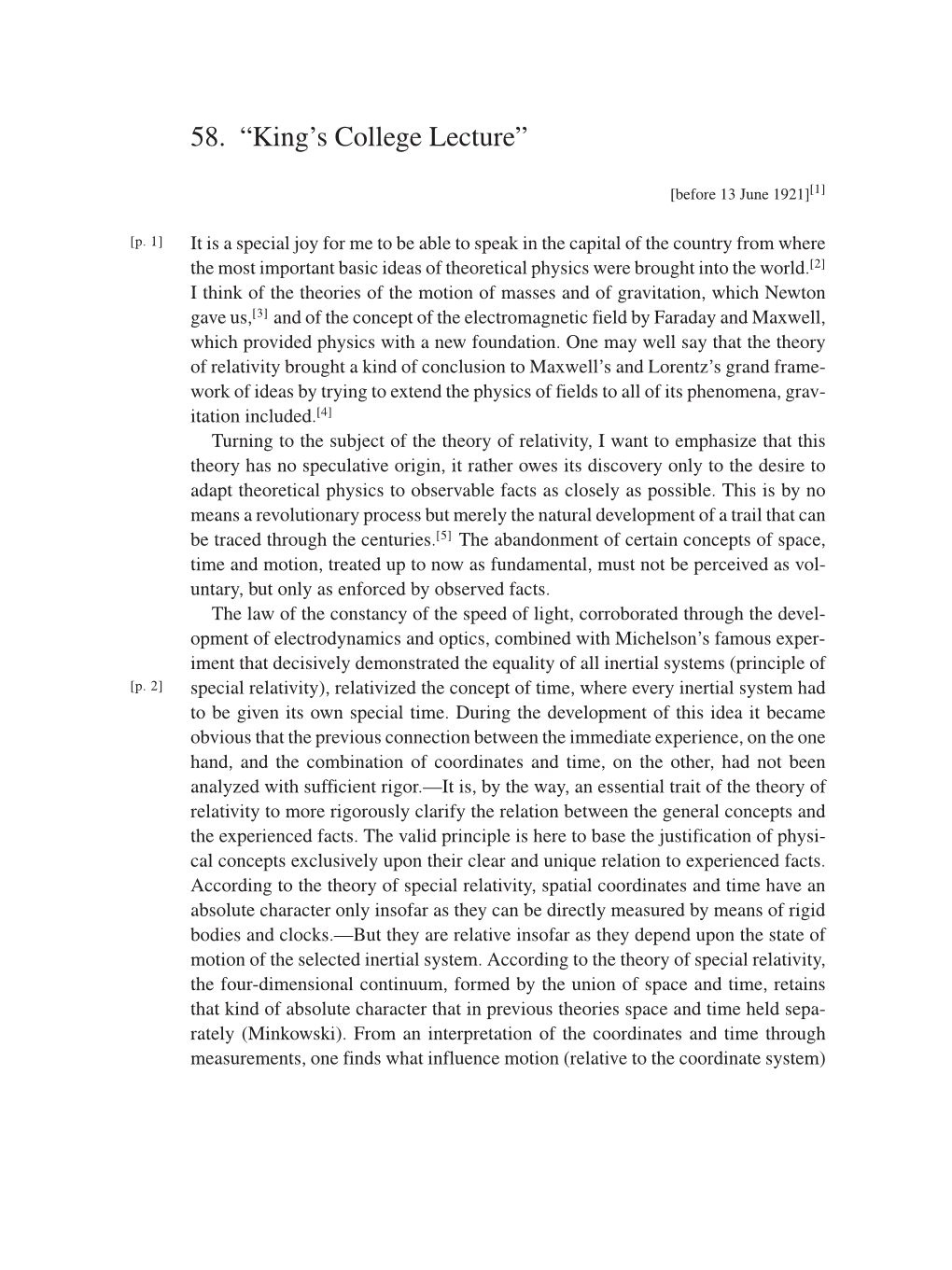2 3 8 D O C . 5 5 K I N G ’ S C O L L E G E L E C T U R E
58. “King’s College Lecture”
[before 13 June
1921][1]
It is a special joy for me to be able to speak in the capital of the country from where
the most important basic ideas of theoretical physics were brought into the
world.[2]
I think of the theories of the motion of masses and of gravitation, which Newton
gave
us,[3]
and of the concept of the electromagnetic field by Faraday and Maxwell,
which provided physics with a new foundation. One may well say that the theory
of relativity brought a kind of conclusion to Maxwell’s and Lorentz’s grand frame-
work of ideas by trying to extend the physics of fields to all of its phenomena, grav-
itation
included.[4]
Turning to the subject of the theory of relativity, I want to emphasize that this
theory has no speculative origin, it rather owes its discovery only to the desire to
adapt theoretical physics to observable facts as closely as possible. This is by no
means a revolutionary process but merely the natural development of a trail that can
be traced through the
centuries.[5]
The abandonment of certain concepts of space,
time and motion, treated up to now as fundamental, must not be perceived as vol-
untary, but only as enforced by observed facts.
The law of the constancy of the speed of light, corroborated through the devel-
opment of electrodynamics and optics, combined with Michelson’s famous exper-
iment that decisively demonstrated the equality of all inertial systems (principle of
special relativity), relativized the concept of time, where every inertial system had
to be given its own special time. During the development of this idea it became
obvious that the previous connection between the immediate experience, on the one
hand, and the combination of coordinates and time, on the other, had not been
analyzed with sufficient rigor.—It is, by the way, an essential trait of the theory of
relativity to more rigorously clarify the relation between the general concepts and
the experienced facts. The valid principle is here to base the justification of physi-
cal concepts exclusively upon their clear and unique relation to experienced facts.
According to the theory of special relativity, spatial coordinates and time have an
absolute character only insofar as they can be directly measured by means of rigid
bodies and clocks.—But they are relative insofar as they depend upon the state of
motion of the selected inertial system. According to the theory of special relativity,
the four-dimensional continuum, formed by the union of space and time, retains
that kind of absolute character that in previous theories space and time held sepa-
rately (Minkowski). From an interpretation of the coordinates and time through
measurements, one finds what influence motion (relative to the coordinate system)
[p. 1]
[p. 2]
